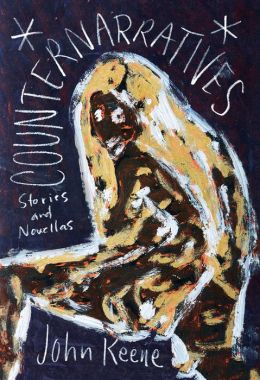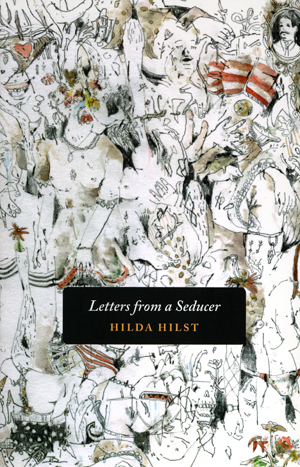When most people think of the Harlem Renaissance, they probably summon the names of its major literary and visual atists--Langston Hughes, Zora Neale Hurston, Claude McKay, Aaron Douglas, etc.--and even may note figures who were linked to but critical of some of its aspects, like W. E. B. DuBois. They also may recall the cultural shift under which it unfolded, "The New Negro Movement." But they may not know the name of the man who popularized the term "The New Negro," in a famous essay and in, perhaps most lastingly, in the title of his 1925 famous anthology, and who provided the intellectual foundation, and cultivated the networks out of which the Harlem Renaissance developed.
That man was Alain Leroy Locke (1885-1954), a Philadelphia native who attended Harvard College (AB 1907), became the first African American Rhodes Scholar, studied at the University of Berlin, and subsequently returned to Harvard to receive his Ph.D. in philosophy in 1918. Black, gay, physically unimposing, an adherent of the Bahá'í faith, and a gifted and productive thinker and writer, Locke not only provided the intellectual framework for the New Negro Movement and the Harlem Renaissance, through his championing of Black art and culture, and the idea of the Diaspora and its links to Africa, but he taught at Howard University from 1918 to 1925, when he was temporarily dismissed for teaching a course on race relations, and then, after reinstatement in 1928, until 1953, training generations of students, including Toni Morrison.
Jeffrey C. Stewart, a professor in the Department of Black Studies at University of California-Santa Barbara has just published a new, thorough biography of Locke, a scholar, critic, and cultural worker, situating him with the intellectual, social, political, and cultural contexts in which he lived. Titled The New Negro: The Life of Alain Locke (Oxford University Press, 2018), Stewart's study draws upon previously unavailable primary source material and interviews with Locke's colleagues, friends and associates. Divided into three sections, the first focusing on Locke's youth and eduction, the second on Locke's involvement with the Harlem Renaissance and his advancement of ideas of Black beauty and aesthetics, and the third exploring the latter portion of Locke's rich and fascinating life, Stewart's exploration of Locke's life and mind looks like it also will provide a richer illumination of the intellectual foundations of and complex relationships among members of the Harlem Renaissance and its many cultural legacies.
I have ordered a copy of Stewart's biography, which has received starred reviews from Kirkus and Booklist and a laudatory review in The New York Times, and am looking forward to reading it. (If I can, I may post a review on here.) I especially enjoyed listening to Professor Stewart discuss it on Midday in New York; you can hear that podcast here. You can also read Eugene Holley's excellent overview of Stewart's book on Publishers Weekly's website. Stewart's previous work includes several edited volumes about Locke, as well as the biography Paul Robeson: Artist and Citizen and 1001 Things Everyone Should Know About African American History, a text that, like the Locke biography, strikes me as particularly appropriate for our current moment.
***
Nearly half a century before Alain Locke graduated from Harvard, the first African American to enroll and successful receive a Harvard College degree left his name on the university's rolls, and proceeded to a remarkable life that, like Locke's, is now almost completely forgotten. Richard T. Greener, whom I'd previously blogged about when a contractor discovered a trunk of his belongings in a run-down Chicago home, was that first graduate (A.B. 1870), and, as part of his extraordinary journey, received a law degree from the University of South Carolina in 1876, during that brief period of post-Civil War Reconstruction, which meant a brief interlude of integration. From 1873 to 1877, Greener served as a professor at South Carolina, becoming the first African American professor there, and, once Reconstruction ended and white retrenchment and segregation resumed their hold, he moved to Howard University, where he would serve as the dean of the law school, before eventually entering government service as an agent in Vladivostok, Russia.
Yesterday, the University of South Carolina unveiled a 9-foot tall statue honoring Greener as one its pioneering figures. Speakers, including Democratic Congressman and Minority Whip James Clyburn, praised his numerous contributions during his brief stay at the university, which included serving as professor of philosophy, while also teaching the classics, mathematics, and constitutional history and serving as USC's first librarian. The statue, by Jon Hair, stands next to the Thomas Cooper Library, which he led. While teaching Greener simultaneously enrolled in South Carolina's law school, graduating with honors, and was admitted to South Carolina's bar in 1876 and the DC bar in 1877. An advocate for racial equality, journalist, and secondary school educator as well, Greener later moved to DC, beginning his career at Howard in 1879, where he taught until 1881.
He would go on to open his own law practice, and later, after serving as US Consul to Bombay, India, became the first black US diplomat to a predominantly white country and the first American to hold his Russian post. Throughout, Greener kept writing and advocating on behalf of African Americans; ironically, his daughter, Belle da Costa Greene, would pass as a white woman in New York, and gained the confidence of and great influence with banker J. P. Morgan, becoming his chief manuscript advisor and eventually the first director of the Morgan Library. At a time when US municipalities, public and private institutions, and corporations are rethinking monuments to problematic historical figures and eras, like the Confederacy, the USC unveiling offers and enshrines a powerful and necessary counternarrative.
In 2001, while celebrating its centenary, USC commissioned and staged a play, The White Problem, by Jon Tuttle, about Greener's time on campus. Then in 2013, the centenary of Greener's arrival at South Carolina, the university honored him by reintroducing him to the campus, complete with a ceremony (see below) on his behalf. Among the events to celebrate him, there was an official presentation of his law diploma and law license, which USC purchased from the Chicago trove. As for his first alma mater, Harvard installed a portrait of Greener in its Annenberg Hall, located in its famous Memorial Hall (opened the year of Greener's graduation). In addition, the Cambridge Historical Commission mounted a plaque commemorating him on College House, in Harvard Square, at 1430 Massachusetts Avenue. You can learn more about Greener's life in Katherine Reynolds Chaddock's biography Uncompromising Activist: Richard Greener, First Black Graduate of Harvard College (Johns Hopkins, 2017).
***
 |
| The unveiling of the Richard T. Greener statue, University of South Carolina (TheState.com © Tracy Glantz tglantz@thestate.com) |
Nearly half a century before Alain Locke graduated from Harvard, the first African American to enroll and successful receive a Harvard College degree left his name on the university's rolls, and proceeded to a remarkable life that, like Locke's, is now almost completely forgotten. Richard T. Greener, whom I'd previously blogged about when a contractor discovered a trunk of his belongings in a run-down Chicago home, was that first graduate (A.B. 1870), and, as part of his extraordinary journey, received a law degree from the University of South Carolina in 1876, during that brief period of post-Civil War Reconstruction, which meant a brief interlude of integration. From 1873 to 1877, Greener served as a professor at South Carolina, becoming the first African American professor there, and, once Reconstruction ended and white retrenchment and segregation resumed their hold, he moved to Howard University, where he would serve as the dean of the law school, before eventually entering government service as an agent in Vladivostok, Russia.
 |
| Democratic Congressman James Clyburn, at the unveiling (TheState.com © Tracy Glantz tglantz@thestate.com) |
 |
| Evelyn Bausman, a grand-daughter of Richard T. Greener, poses with a statue of Greener that was unveiled at The University of South Carolina.(TheState.com © Tracy Glantz tglantz@thestate.com) |
He would go on to open his own law practice, and later, after serving as US Consul to Bombay, India, became the first black US diplomat to a predominantly white country and the first American to hold his Russian post. Throughout, Greener kept writing and advocating on behalf of African Americans; ironically, his daughter, Belle da Costa Greene, would pass as a white woman in New York, and gained the confidence of and great influence with banker J. P. Morgan, becoming his chief manuscript advisor and eventually the first director of the Morgan Library. At a time when US municipalities, public and private institutions, and corporations are rethinking monuments to problematic historical figures and eras, like the Confederacy, the USC unveiling offers and enshrines a powerful and necessary counternarrative.
 |
| Richard T. Greener (photo courtesy of Harvard University Library) |
In 2001, while celebrating its centenary, USC commissioned and staged a play, The White Problem, by Jon Tuttle, about Greener's time on campus. Then in 2013, the centenary of Greener's arrival at South Carolina, the university honored him by reintroducing him to the campus, complete with a ceremony (see below) on his behalf. Among the events to celebrate him, there was an official presentation of his law diploma and law license, which USC purchased from the Chicago trove. As for his first alma mater, Harvard installed a portrait of Greener in its Annenberg Hall, located in its famous Memorial Hall (opened the year of Greener's graduation). In addition, the Cambridge Historical Commission mounted a plaque commemorating him on College House, in Harvard Square, at 1430 Massachusetts Avenue. You can learn more about Greener's life in Katherine Reynolds Chaddock's biography Uncompromising Activist: Richard Greener, First Black Graduate of Harvard College (Johns Hopkins, 2017).

















